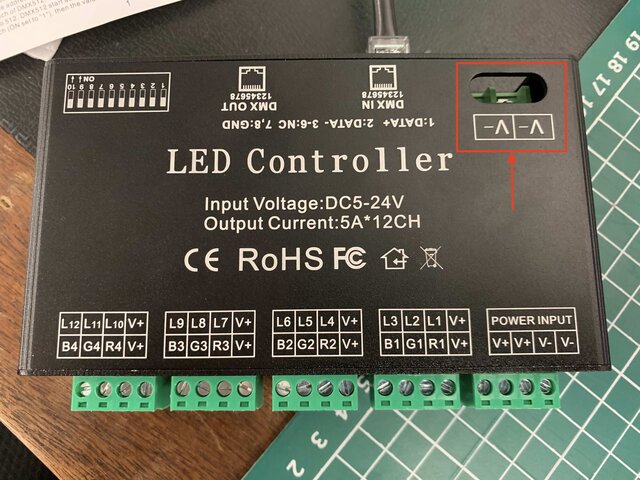Palms
Member
Hi all,
I have a DMX decoder for RGB LED tape and I want to wire it up for use on a show. Its clear how the tape gets wired in but I have got a bit confused on how the power supply hooks up. There is an in for the power input clearly marked but then there is also another 'V- V-' terminal that I'm not sure what I need to do with. I purchased it online and the wiring schematic is also a bit confusing. Pictures attached hopefully show what I mean.
Any help much appreciated.
I have a DMX decoder for RGB LED tape and I want to wire it up for use on a show. Its clear how the tape gets wired in but I have got a bit confused on how the power supply hooks up. There is an in for the power input clearly marked but then there is also another 'V- V-' terminal that I'm not sure what I need to do with. I purchased it online and the wiring schematic is also a bit confusing. Pictures attached hopefully show what I mean.
Any help much appreciated.




